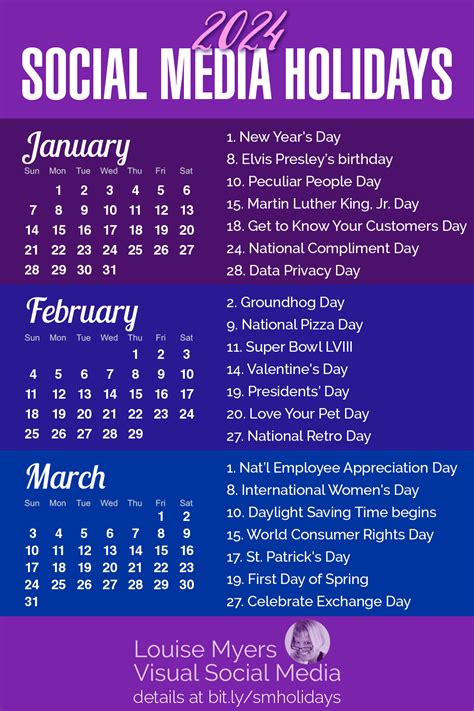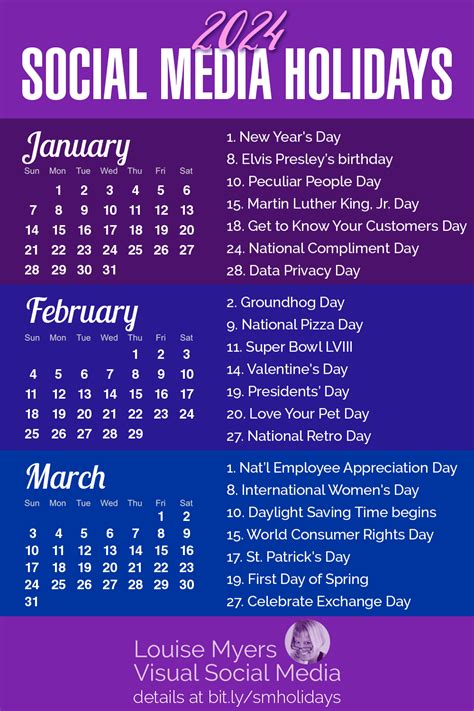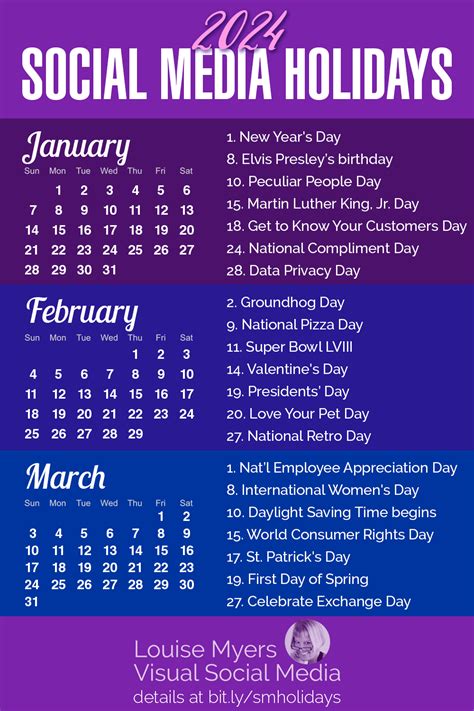Learn how to create a social media content calendar for 2024 holidays by researching trends, developing ideas, mapping out schedule, and optimizing performance.As we approach the new year, it’s essential for businesses and brands to start thinking about their social media content strategy for the upcoming holidays in 2024. Creating a well-planned and engaging social media content calendar can ensure that you are prepared to capitalize on the festive season and maximize your online presence. In this blog post, we will explore the key steps to creating a successful social media content calendar for the 2024 holidays. From researching holiday trends and developing content ideas to mapping out a posting schedule and optimizing performance, we will cover everything you need to know to set yourself up for social media success in the upcoming year. So, grab a pen and paper, and let’s dive into the strategies and tactics that will help you stand out on social media during the holidays.
Researching holiday trends
Researching holiday trends is an important step in creating a successful social media content calendar for 2024. It allows you to stay ahead of the curve and create relevant and engaging content that resonates with your audience. By understanding the latest holiday trends, you can tailor your content to meet the interests and needs of your target demographic.
One way to research holiday trends is to keep an eye on popular hashtags and trending topics on social media platforms. This can give you insight into what holidays are gaining traction and what type of content is performing well. You can also use tools like Google Trends to see which holidays are being searched for the most and to track the rise and fall of interest in specific holidays over time.
Another helpful resource for researching holiday trends is industry reports and studies. Many companies and organizations release reports on consumer behavior and trends, including holiday shopping habits and spending. By staying informed on these trends, you can create content that aligns with the interests and behaviors of your audience.
Lastly, don’t forget to look at historical data and performance metrics from previous years. This can give you valuable insight into which holidays have performed well for your brand in the past, and which types of content have resonated with your audience. By analyzing this data, you can make informed decisions about which holidays to prioritize in your content calendar and which types of content to create.
Developing content ideas and themes
When it comes to developing content ideas and themes for your social media content calendar, it’s important to have a clear plan in place. One way to generate ideas is to look at upcoming holidays and events on the calendar. By researching holiday trends, you can identify popular themes and topics that will resonate with your audience. This could include creating content around specific holidays such as Christmas, New Year’s Eve, or Valentine’s Day, as well as more niche holidays like National Coffee Day or Halloween.
Another approach to developing content ideas and themes is to consider the interests and preferences of your target audience. What are their pain points, interests, and hobbies? By creating content that addresses these specific topics, you can ensure that your posts are relevant and engaging for your followers. This could involve conducting surveys or polls to gather insights, or simply staying up to date with industry news and trends.
Furthermore, it’s important to map out a posting schedule that aligns with your content themes. This means identifying the best times to share specific types of content and adjusting your schedule as needed. For example, if you know that your audience is most active on weekends, you may want to prioritize lifestyle or leisure-themed posts for those days, while reserving informational or educational content for weekdays.
In addition, creating engaging visual content is essential for ensuring that your social media posts stand out. This could involve using high-quality images, infographics, videos, or even user-generated content to capture the attention of your audience. By incorporating visual elements that are both aesthetically pleasing and relevant to your content themes, you can increase the likelihood of engagement and shares.
Mapping out posting schedule
When it comes to mapping out your posting schedule for social media, it’s important to consider both the content you want to share and the holidays or events that may impact your audience. Start by researching holiday trends for 2024 in order to identify key dates and themes that you can use to plan your posts around. This can include traditional holidays like Christmas and New Year’s, as well as newer events that are gaining popularity on social media.
Next, developing content ideas and themes for each holiday or event can help guide your posting schedule. Consider how you can tie in your products or services to each occasion, and create a list of specific topics you want to cover. This can help ensure that your posts are relevant and engaging for your audience.
Creating a visual content calendar can be a useful tool for mapping out your posting schedule. Using a table format, you can list each day or week leading up to a holiday, and fill in the specific content ideas and themes you want to highlight. This can help you plan ahead and stay organized, ensuring that you have a consistent stream of posts leading up to each holiday.
Finally, once you’ve implemented your posting schedule, it’s important to regularly analyze and optimize performance. Use analytics to track the engagement and reach of your posts, and make adjustments to your schedule based on what’s working and what’s not. This can help you continuously improve your social media strategy and ensure that your content is resonating with your audience.
Creating engaging visual content
When it comes to creating engaging visual content for social media, it is important to consider the preferences of your target audience. Researching their demographics, interests, and behaviors can provide valuable insights into the types of visual content they are most likely to engage with. Additionally, taking into account current holiday trends and popular themes can help in creating visually appealing content that resonates with your audience.
One effective way to create engaging visual content is by developing a range of content ideas and themes. By brainstorming different concepts, styles, and formats, you can ensure that your visual content remains fresh and appealing to your followers. This may involve experimenting with different types of visual media, such as images, videos, GIFs, and infographics, to keep your social media feed dynamic and engaging.
Mapping out a posting schedule can also contribute to the creation of engaging visual content. By determining the best times and frequencies for posting, you can optimize the visibility and impact of your visual content. This may involve using a social media management tool to schedule posts in advance, ensuring that your visual content is delivered at the most opportune moments for maximum audience engagement.
Finally, analyzing and optimizing the performance of your visual content is crucial for ongoing improvement. By monitoring metrics such as reach, engagement, and conversion rates, you can gain valuable insights into the effectiveness of your visual content and make data-driven decisions to enhance its engagement and impact.
Analyzing and optimizing performance
When it comes to analyzing and optimizing performance on social media, it’s crucial to have a clear understanding of your goals and KPIs. Start by identifying your key performance indicators, such as engagement rates, click-through rates, and conversion rates. These metrics will help you measure the success of your social media content and inform your optimization strategies.
Next, use social media analytics tools to track and analyze the performance of your posts. Look for patterns in the type of content that resonates most with your audience, as well as the times of day and days of the week when your posts receive the most engagement. Use this data to inform your content strategy and posting schedule, optimizing your efforts for maximum impact.
Consider conducting A/B tests to experiment with different types of content, messaging, and visuals. By analyzing the results of these tests, you can refine your social media strategy and identify the most effective approaches for engaging your audience and driving desired actions.
Finally, regularly revisit your social media performance data to assess the effectiveness of your efforts and adjust your strategy as needed. Continuous analysis and optimization are key to ensuring that your social media content is consistently meeting your goals and delivering measurable results.
Frequently Asked Questions
Why is it important to have a social media content calendar for holidays?
Having a social media content calendar for holidays allows you to plan and schedule your holiday-themed content in advance, ensuring that you are prepared for important dates and can maintain a consistent posting schedule.
What are the benefits of creating a social media content calendar for holidays?
Benefits of creating a social media content calendar for holidays include better organization and planning, improved time management, increased engagement with your audience, and the ability to align your content with specific holiday themes and trends.
How far in advance should you start creating a social media content calendar for holidays?
It is recommended to start creating a social media content calendar for holidays at least 1-2 months in advance to allow ample time for brainstorming, designing, scheduling, and coordinating with other team members or collaborators.
What are some key elements to include in a social media content calendar for holidays?
Key elements to include in a social media content calendar for holidays are the holiday dates, specific themes or topics for each holiday, planned content type (such as photos, videos, or blog posts), posting schedule, targeted audience, and any relevant promotions or campaigns.
How can you incorporate diversity and inclusivity in holiday-themed social media content?
Incorporate diversity and inclusivity in holiday-themed social media content by featuring a variety of cultural traditions and celebrations, highlighting diverse perspectives and stories related to the holiday, and ensuring that your content is respectful and representative of all communities and identities.
What tools or resources can help in creating a social media content calendar for holidays?
Tools and resources that can help in creating a social media content calendar for holidays include social media management platforms like Hootsuite or Buffer, content creation apps like Canva or Adobe Spark, holiday marketing calendars, and analytics tools to monitor the performance of your holiday content.
How can you evaluate the success of your holiday-themed social media content?
You can evaluate the success of your holiday-themed social media content by analyzing engagement metrics such as likes, comments, shares, and click-through rates, monitoring the increase in followers or subscribers during holiday periods, and gathering feedback from your audience through surveys or polls.



